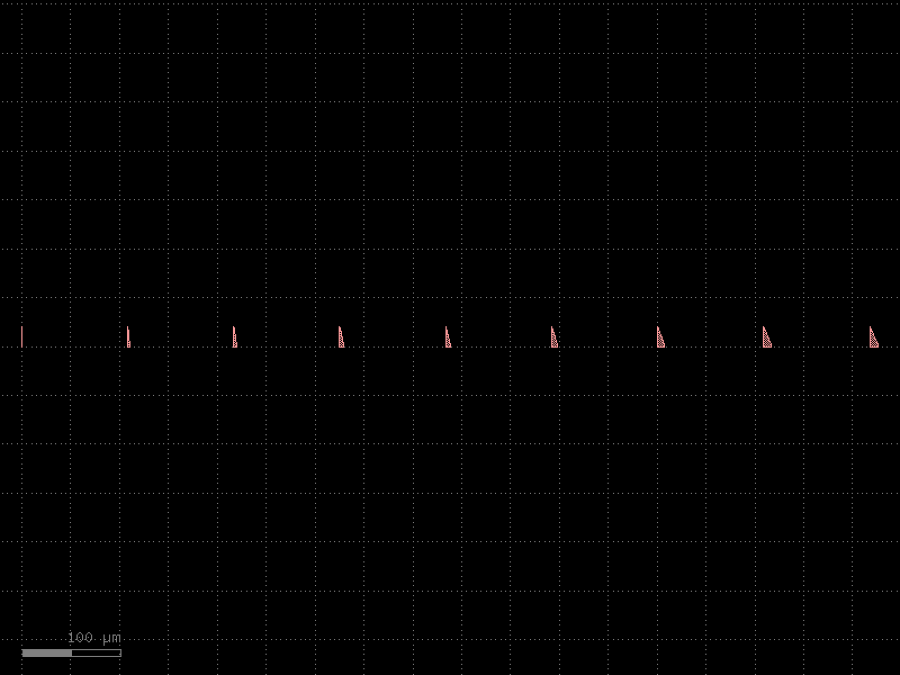- gdsfactory.grid(components: Sequence[str | Callable[[...], Component] | dict[str, Any] | DKCell] = ('rectangle', 'triangle'), spacing: tuple[float, float] | float = (5.0, 5.0), shape: tuple[int, int] | None = None, align_x: Literal['origin', 'xmin', 'xmax', 'center'] = 'center', align_y: Literal['origin', 'ymin', 'ymax', 'center'] = 'center', rotation: int = 0, mirror: bool = False)Component
Returns Component with a 1D or 2D grid of components.
- Parameters
components– Iterable to be placed onto a grid. (can be 1D or 2D).spacing– between adjacent elements on the grid, can be a tuple for different distances in height and width or a single float.shape– x, y shape of the grid (see np.reshape). If no shape and the list is 1D, if np.reshape were run with (1, -1).align_x– x alignment along (origin, xmin, xmax, center).align_y– y alignment along (origin, ymin, ymax, center).rotation– for each component in degrees.mirror– horizontal mirror y axis (x, 1) (1, 0). most common mirror.
- Returns
Component containing components grid.
import gdsfactory as gf components = [gf.components.triangle(x=i) for i in range(1, 10)] c = gf.grid( components, shape=(1, len(components)), rotation=0, mirror=False, spacing=(100, 100), ) c.plot()